
Tall clock with case by John Janvier Sr., Elkton, Maryland, and movement by Benjamin Chandlee, Nottingham, Pennsylvania, 1770-1774. Mahogany with tulip poplar and hard pine. H. 101 1/2", W. 21 1/4", D. 11 1/8". (Courtesy, Biggs Museum of American Art; photo, Carson Zullinger.)

Rear view, showing the stacked backboards of the tall clock illustrated in fig. 1.

Detail of the printed label of John Janvier pasted on the inside backboards of the tall clock illustrated in fig. 1.

Card table, probably New York City, 1795–1805. Mahogany with unidentified secondary woods. H. 28 1/2", W. 33 3/4", D. 18" (closed). (Courtesy, New-York Historical Society.)

Detail showing the conventional horizontal lamination of the rail of a Rhode Island card table, 1795–1805. (Courtesy, Stanley Weiss Collection; photo, Marc Beaulac.)

Detail of the vertical laminations forming the rail of the card table illustrated in fig. 4.

Tall clock with case by Thomas Janvier, Odessa, Delaware, and movement by Duncan Beard and Christopher Weaver, Odessa, Delaware, 1792. Mahogany with yellow pine and tulip poplar. H. 100", W. 21 3/8", D. 10 3/4". (Courtesy, Biggs Museum of American Art; photo, Carson Zullinger.) The scrolls and feet are replacements, and the pediment has been extended 1 3/8 inches to accommodate a replacement blind fretwork.

Tall clock with case by James McDowell and Daniel McDowell, Smyrna, Delaware, 1793–1800. Mahogany with unidentified secondary woods. H. 96 1/2", W. 19 3/4", D. 10 1/4". (Private collection, photograph courtesy of Israel Sack, Inc. Archives, Yale University Art Gallery.)

Detail of the label pasted to a horizontally grained backboard on the tall clock illustrated in fig. 8.
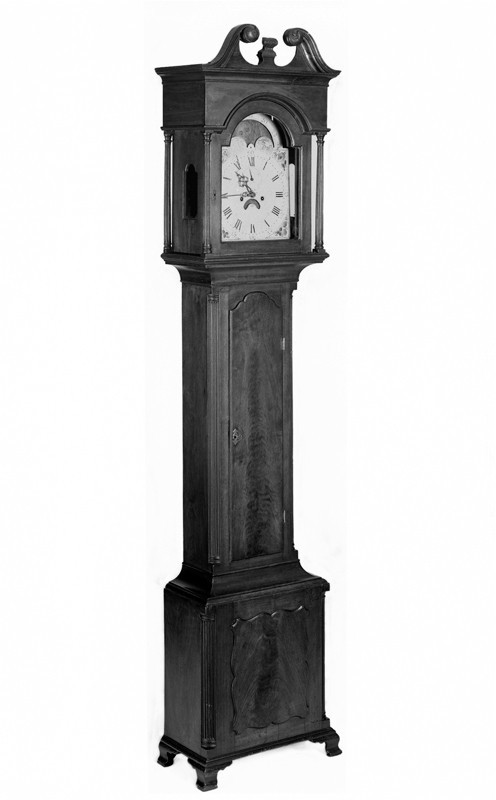
Tall clock with case by John Janvier Sr., Odessa, Delaware, 1795. Walnut with white cedar and tulip poplar. H. 94 3/4", W. 21 1/8", D. 11 3/8". (Courtesy, Winterthur Museum.)

Detail of the handwritten label pasted to the inside center of backboards on the tall clock illustrated in fig. 10.

Tall clock with case by John Janvier Sr., Odessa, Delaware, 1779, movement by Duncan Beard. Mahogany with unidentified secondary woods. H. 97", W. 21", D. 11" (approximate). (Courtesy, Leslie Miller and Richard Worley.)

Detail showing the inscription inside the waist door of the tall clock illustrated in fig. 12.
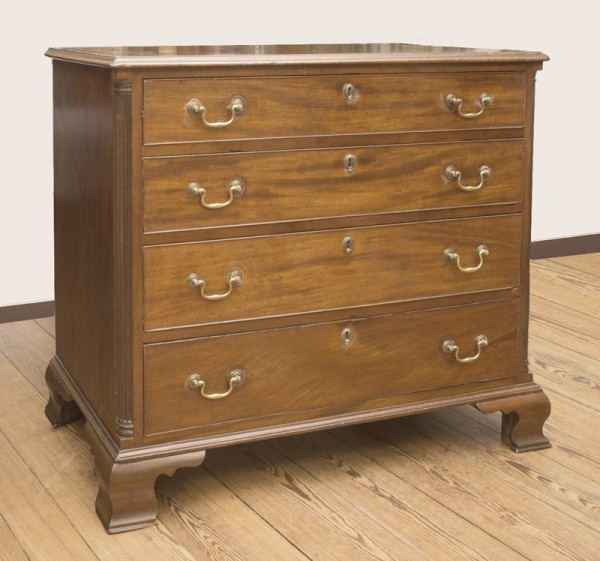
Chest of drawers by John Janvier Jr., Odessa, Delaware, probably 1806. Mahogany with cherry, tulip poplar, yellow pine, and white cedar. H. 33 5/8", W. 39 1/8", D. 22". (Courtesy, Historic Odessa Foundation; photo, Carson Zullinger.)

Detail of the inscription on the outside case bottom of the chest illustrated in fig. 14.
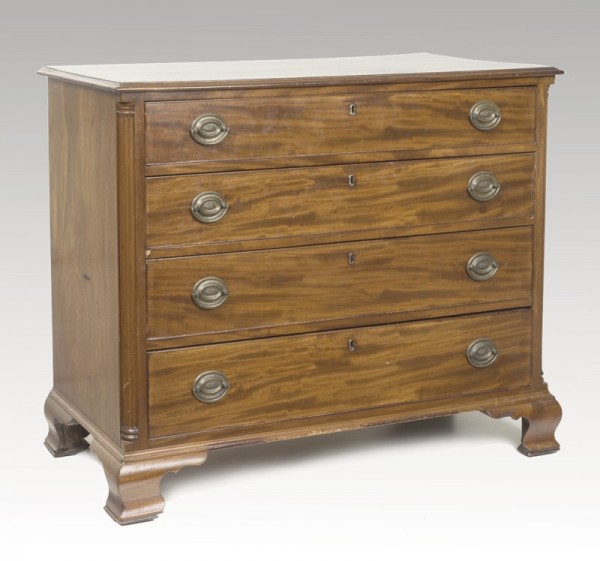
Chest of drawers by Peregrine Janvier, Odessa, Delaware, 1804. Mahogany with tulip poplar, yellow pine, and white cedar. H. 34 3/4", W. 41 1/4", D. 22 3/4". (Courtesy, Biggs Museum of American Art; photo, Carson Zullinger.)

Detail of the half-dovetail groove cut into the top of the chest illustrated in fig. 14.
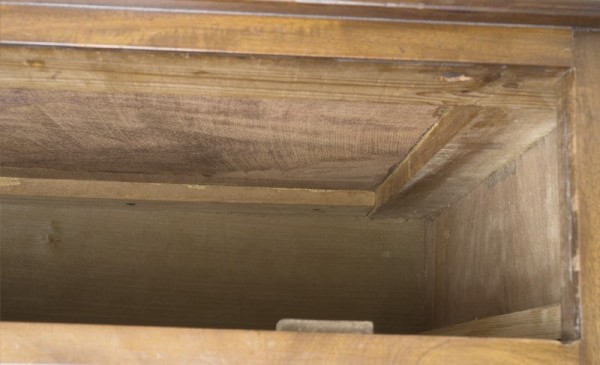
Detail of the interior glue blocks securing the top of the chest illustrated in fig. 14.
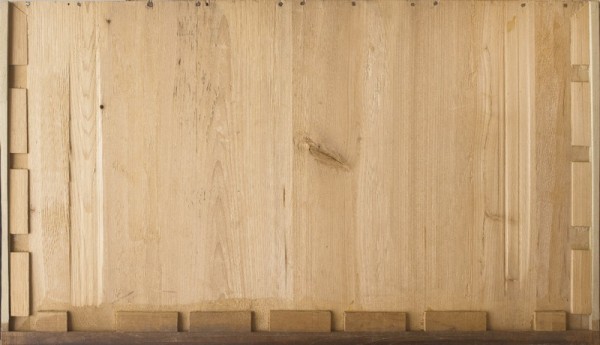
Detail of the glue blocks along the underside edges of a drawer from the chest illustrated in fig. 14.

Chest of drawers by John Macdonough, Odessa, Delaware, 1807. Mahogany with tulip poplar, white cedar, and oak. H. 34 7/8", W. 41", D. 23 1/2". (Courtesy, Biggs Museum of American Art; photo, Carson Zullinger.)

Detail of one of the half-dovetail grooves and wooden plugs in the top of the chest illustrated in fig. 20.

Sideboard by John Janvier Jr., Odessa, Delaware, 1812. Mahogany with tulip poplar, oak, and white pine or white cedar. H. 52 1/4", W. 72 3/8", D. 29 7/8". (Private collection; photo, Carson Zullinger.)

Table, eastern Pennsylvania, 1740–1770. Walnut with tulip poplar. H. 29", W. 41", D. 26 1/2". (Courtesy, Monmouth County Historical Association, Freehold, N.J.; photo, McKay Imaging.)

Detail of the dovetailed cleat and pins (missing from holes) securing the top of the table illustrated in fig. 23.

Chest of drawers, Odessa, Delaware, 1790–1810. Cherry with tulip poplar. H. 36 1/8", W. 40 1/4", D. 22 3/4". (Courtesy, Biggs Museum of American Art; photo, Carson Zullinger.)

Detail of the inscription on the outside bottom of the chest illustrated in fig. 25.

Detail of the foot construction of the chest illustrated in fig. 25. The rounded glue block is a later addition.

Detail of the construction of the left rear foot of the chest illustrated in fig. 25.
